Houston Press: CAMH Gives Houston Punk Icons Mydolls a World of Their Own
 Contemporary Arts Museum Houston’s 20HERTZ lecture series, which focuses on contemporary musical experiences, has been creating something quite special for at least the past six months, maybe more. “We’ve been working really hard on this one,” Communications Associate Max Fields explains while showing off the different features in the museum’s Cullen Education Resource Room.
Contemporary Arts Museum Houston’s 20HERTZ lecture series, which focuses on contemporary musical experiences, has been creating something quite special for at least the past six months, maybe more. “We’ve been working really hard on this one,” Communications Associate Max Fields explains while showing off the different features in the museum’s Cullen Education Resource Room.
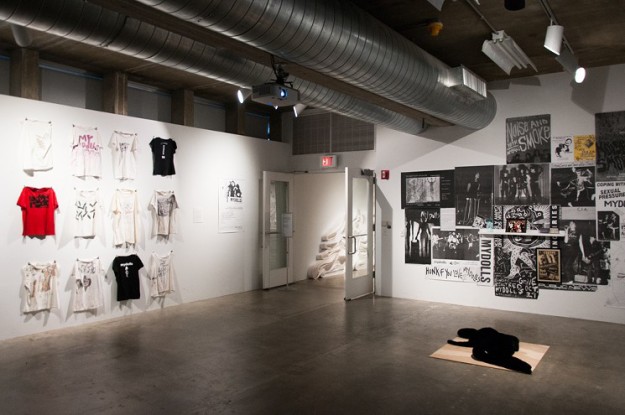
Indeed, as we walk the room, there’s an electricity in the air — the kind that inspires amplifier feedback and DIY punk rebellion. That’s because tonight the CAMH celebrates local music history by presenting A World of Our Own: Mydolls and the Houston Punk Scene.
Mydolls members will share in the discussion with archivist Nancy Agin (MA Arts Leadership, U of H Candidate) and Dan Workman of historic recording studio Sugarhill, who also performed on their latest recording. Agin’s enthusiasm spills over when she discusses MyDolls.
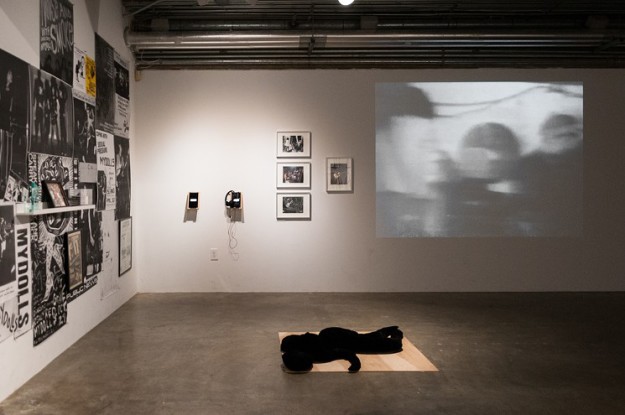
“This band deserves all the credit for paving a path for women and minorities in music and the arts,” she says. “I, like so many others, hold these musicians in the highest regard as local icons of an underground scene during the late ’70s [and] early ’80s, when the first generation of punk music emerged here.”
Lead singer Linda Younger tells how the band collected the pieces in anticipation of the museum installation.
“Many of the objects on display were organized through collaboration with Wild Dog Archives,” she explains. “Henry Wild Dog was an integral part of the scene in the late ’70s and early ’80s in Houston. He was always at [famous Houston punk club] the Island, and his archives are being preserved and restored by [Agin] and her husband.”
Many of the things now on display now came from Henry Wild Dog Archives. Agin not only meticulously collected and archived all the pieces for the installation but has also created a limited-edition fanzine art catalog in celebration of Mydolls’ historical impact. Since few copies are available, this collector’s item will be widely sought-after at tonight’s event.
The discussion will hinge not only on Mydolls’ rich history, which spans back to the 1970s, but also the cultural impact of the four-piece punk rock band on Houston itself. Afterward, of course, there’ll be a live set by the band. Even the upstairs installation by Mark Flood has a Mydolls connection. Former labelmates on CIA Records, Flood’s former band, Culturcide, often performed on the same bill with Mydolls. Life takes unexpected twists and turns, and this seemingly complete circle is one of the most interesting of Mydolls’ career.
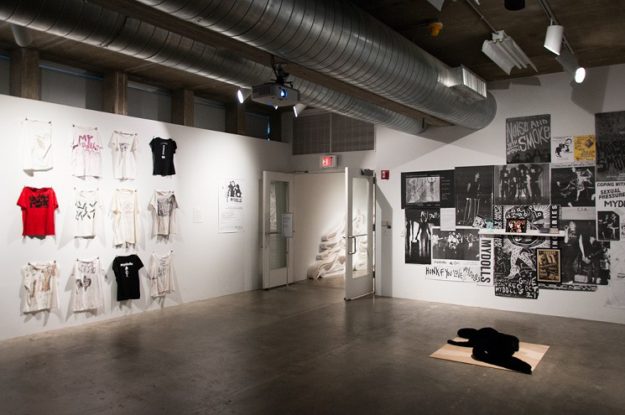
Reflecting on their beginnings, bassist Dianna Ray says, “Trish [Herrera, guitarist] and I went to punk-rock shows almost every night. We saw some amazing bands and some pretty terrible ones, too. One night we decided we wanted to start a band.
“We didn’t see the fact that I had never played any of the instruments we were going to use as a deterrent,” Ray continues. “If you don’t know the rules, you are free to break them. So I feel like we come from a pretty humble starting place. To have a sort of retrospective at CAMH, a place I love and respect, is an honor and so far beyond any ambition I could have imagined the night Trish [Herrera] and I started Mydolls that it also makes me giggle.”
Other areas of interest are a listening station that includes a playlist of songs, random recordings, tour conversations, interviews and candid moments of yesteryear when Mydolls were a regular sight among many stages across Texas.
Perhaps one of the most exciting interactive modules is an iPad that contains dozens of archived photos, flyers, letters and a travel log written by drummer George Reyes himself. “I love George’s tour journals,” says Dianna Ray. “I don’t think I had ever read them before we started culling through our personal archives for this show. They are full of anecdotes from our early tours.”
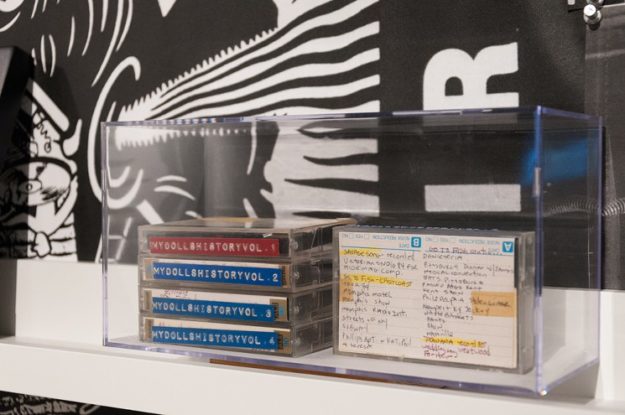
“It is a great honor to be recognized by a museum that I have spent many years visiting and viewing exceptional art,” Reyes adds. “It was somewhat surreal to see and hear the things that we created. As a representative band of C.I.A. Records, who had many great artists, it is satisfying to know our work resonates as art.”
There’s even the “Betsy” doll, which usually remained in the bass drum during performances; it happens to be Herrera’s favorite part of the installation. “That [doll] was created by Mary Hayslip [and] inspired Dianna to create our Mydolls logo, which we have used since our very first release [in] 1980, ‘Nova Grows Up b/w ‘In Technicolor.’”
Mydolls have a simple vision for the exhibit. “I hope it succeeds in inspiring others to go make a band!” Younger explains. “Looking back at our archives reminds us that when we started, there was no Internet, social media, cell phones. Everything was handwritten or cut-and-paste posters, letters to record companies and radio stations, letters from fans…”
“For Mydolls, it’s one more way to thank those who have supported us all these years and to pause and reflect on what an incredible history we have had and continue to have together,” she continues. “Four decades, and we remain friends and musical collaborators. Such a blessing!”
The interview and discussion of “A World of Our Own: Mydolls In the Houston Punk Scene” begins at 6:30 p.m. tonight at Contemporary Arts Museum Houston, 5216 Montrose, with a performance by the band afterward. The CAMH is always free.
Houston Press : Women are Dominating Houston Music, Both Onstage and Behind the Scenes
 Trish Herrera, guitarist in MyDolls since 1978, is a local legend. She and her bandmates have been an integral piece of the Houston punk community since it was dominated by testosterone-heavy groups like The Hates, D.R.I. and Really Red, to name a few.
Trish Herrera, guitarist in MyDolls since 1978, is a local legend. She and her bandmates have been an integral piece of the Houston punk community since it was dominated by testosterone-heavy groups like The Hates, D.R.I. and Really Red, to name a few.
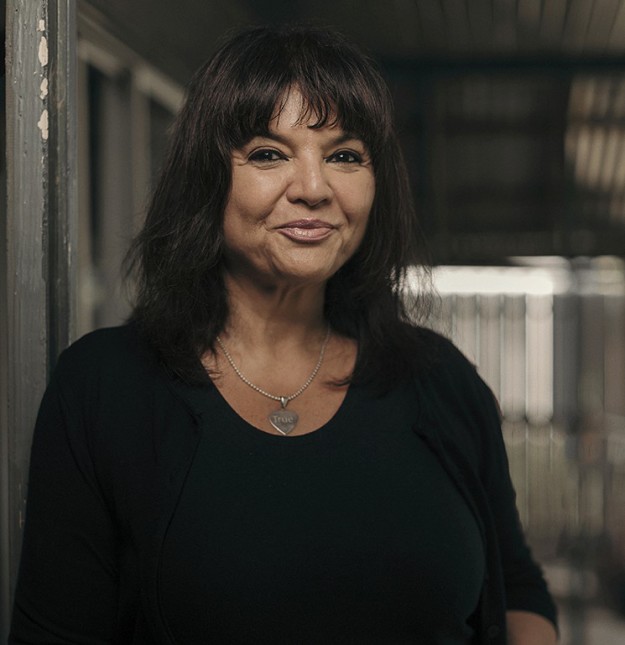
With that reputation comes some impressive recognition. On July 28, the Contemporary Arts Museum Houston will host a discussion panel and performance by the band to mark the opening of “A World of Their Own: MyDolls Music and the Houston Punk Scene,” an exhibit that will feature several items from the band’s personal archives. Pretty big acknowledgment for a punk group.
Yet Herrera’s calm and sensitive demeanor would never make you think for a second that status has gone to her head. Whether performing for a standing-room-only crowd or working in the hair salon she runs out of her house, Herrera maintains the same cool, laid-back vibe.
Here, Herrera leans over the head of a client, clipping away while standing under a framed picture of Joan Jett. At 62, Herrera still plays a mean punk-rock guitar, with a beauty that defies whatever one might think women in their sixties should look like or should be doing. On this day, her fingers separate hair into sections as she speaks softly, yet firm in her convictions and opinions.
Herrera admits music has been a part of her identity her entire life. “I knew I was a musician from the time I was a small child,” she says. “I wanted to write songs and play guitar.”
When Herrera and MyDolls entered the punk scene, it was still very much a boys’ club. Riot Grrrl wouldn’t come into existence for nearly 20 years, often leaving her band to tough things out for themselves in an environment that wasn’t always so friendly.
“When slam-dancing started to become thrashing, with spikes and throwing each other around in the audience, the women that were once playfully slam-dancing in the front started getting hurt,” Herrera recalls. “They pushed us to the outskirts of the mosh pit. It became more like a boys’ club with a certain type of dress. More like boys playing football than expressing themselves politically or artistically.”
That “boys will be boys” attitude prevailed even in a scene that otherwise championed the values of self-expression and equality, remembers Herrera, recounting how she and her band were once treated.
“One club would not give us the money [after a show] because we were female,” she recalls. “[He] would only hand it to the male members of our entourage.”
“Never settle!” she urges. “Always get paid for your work — you’re worth it. Make sure that the clubs have great PAs and incredible sound engineers. Stay close and connected to your audience. Observe and communicate with people younger than yourself.
“Learn your craft; study the history of female musicians that have blazed the path for you,” Herrera continues. “Don’t strive to be famous; strive to do what you love. Be calm, listen, take your time and kick ass.”
Is it really important to recognize the gender of some of the city’s most prominent music-makers? Most of the women we spoke with said yes, women have unique perspectives that inform the music they make. Others said good music is good music, no matter the sex of its writer and/or performer. But one thing they all believe is that every woman in the scene, established or upstart, needs encouragement. They didn’t hesitate to impart what they’ve learned to benefit others.
“There are always going to be people out there who will ridicule you, try to snuff out the flame — don’t let them,” says veteran rocker Alice Sin, nee Allison Gibson, who currently sings for Supergrave and Baron Von Bomblast. “Follow your passions, follow your own dreams and visions because trust me, if you don’t get the fire burning, no one else is going to do it for you. Life is way too short to let yourself down.
“That being said, I really have to give a lot of credit to the Houston music scene,” she continues. “People like to pooh-pooh on it and talk shit, but I’ll tell you what, I’ve been on stages in this city for damn near close to 25 years and the support that I have been given, and continue to receive, floors me.”
“At this time, there is a spirit of cooperation, regardless of sex, in the Houston music scene,” agrees singer-songwriter Sherita Perez, who sees this as the natural progression of a larger societal shift from the 1960s and ’70s to today.
“This has resulted in ever-increasing numbers of children seeing their parents share the earning as well as domestic duties,” says Perez, who will release an EP this fall. “With so many of us growing up in this rebalanced way, it’s only natural that we would consider it the norm for women and men to work alongside one another. I know so many wonderful men that treat me with dignity and respect and appreciate me as an equal and valued contributor to the group and to the H-town music scene.”
But even such noble aspirations come with no guarantees. The only way to be treated with dignity and respect is to go out and command it, offers Oceans of Slumber’s Cammie Gilbert.
“Practice first, everything else second,” she says. “Don’t ask for permission or let anyone tell you what you should want for yourself. Seriously, they can kiss your ass. You want it, you go after it and you take it. Nothing is stopping you but yourself.”
Free Press Houston: THE BEST OF THE WEEK
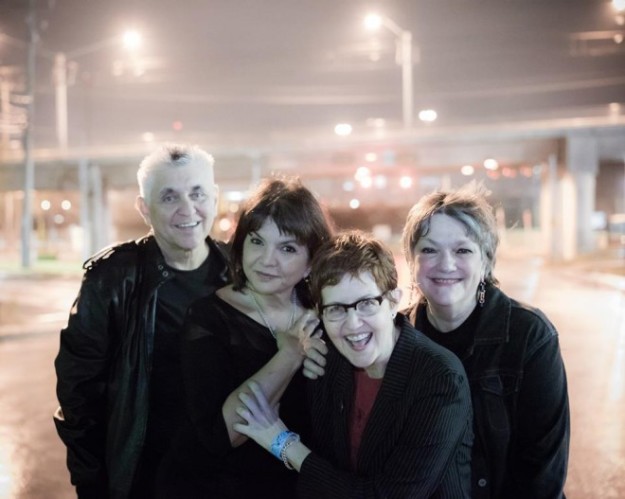 Mydolls, Photo: Scott Doyle
Mydolls, Photo: Scott Doyle
 It’s hard to believe, but the legendary Houston punk band MYDOLLS will be playing a set over at Walters. Formed in the late seventies, this four piece has been making revolutionary music and making fans wherever they play. They reunited in 2008, and they’ve been going strong ever since. Last year they dropped a new album with “It’s Too Hot For Revolution,” and it just proves that they can still bring it. The crazed fun of Austin’s Gretchen’s Disco Plague will be on as direct support. So aside from the fact that this is an improvised disco band that’s fun and insane live, the group also contains members of Two Nice Girls, SWANS and Erase Errata. I caught them when they were here last time and they’re a real trip live. The art punk of No Love Less will also be on the bill, while the Jenny Hoyston of Erase Errata lead psych of Vacation Eyes will open the all ages show. The doors are at 8:00, and the tickets are between $7.00 and $10.00.
It’s hard to believe, but the legendary Houston punk band MYDOLLS will be playing a set over at Walters. Formed in the late seventies, this four piece has been making revolutionary music and making fans wherever they play. They reunited in 2008, and they’ve been going strong ever since. Last year they dropped a new album with “It’s Too Hot For Revolution,” and it just proves that they can still bring it. The crazed fun of Austin’s Gretchen’s Disco Plague will be on as direct support. So aside from the fact that this is an improvised disco band that’s fun and insane live, the group also contains members of Two Nice Girls, SWANS and Erase Errata. I caught them when they were here last time and they’re a real trip live. The art punk of No Love Less will also be on the bill, while the Jenny Hoyston of Erase Errata lead psych of Vacation Eyes will open the all ages show. The doors are at 8:00, and the tickets are between $7.00 and $10.00.
Houston Press: Shows of the Week
 MYDOLLS
MYDOLLS
Walters Downtown, March 4
On the list of great Texas punk album titles, It’s Too Hot For Revolution! has to be right up there at the top. True, MyDolls’ designation as “punk” has always been more of a reflection of the times in which they first appeared — 1978, when Houston’s artistic climate was quite a bit more conservative — than the style of music they play. Mostly, as the band’s Linda Younger told us last year, “MyDolls music just happens.” Collecting unrecorded songs from before the band’s original 1986 breakup plus “Don’t Fucking Die,” a Sonic Youth-style guitar meditation in memory of late guitarist Kathy Johnston, whose death sparked their re-formation about five years ago, Revolution! is actually an excellent art-rock record. But to be fair, their aggressive reading of Charles Bukowski’s poem “Fair Stand the Fields of France” is about as punk as it gets, too. With Gretchen’s Disco Plague…It’s Infectious!, No Love Less and Vacation Eyes.
Houston Press: MORE WITH MYDOLLS: “BEING YOURSELF IS ALWAYS IN FASHION
 Over the last decade, Mydolls have rejuvenated themselves by branching deep into local music again. In the fabled past, they haunted clubs like Caribana, the Island, Rudyards, and Numbers; in some cases, they have returned to those grounds but also lit up fires under new, wide-eyed audiences at Walters, Super Happy Fun Land, and Dan Electro’s. They mentor young girls in the fine art of rock and roll, have keenly revisited their catalog and reinvented songs, dealt with deep personal loss and disease, and found kinship on the West Coast while gigging with heralded bands like the Avengers.
Over the last decade, Mydolls have rejuvenated themselves by branching deep into local music again. In the fabled past, they haunted clubs like Caribana, the Island, Rudyards, and Numbers; in some cases, they have returned to those grounds but also lit up fires under new, wide-eyed audiences at Walters, Super Happy Fun Land, and Dan Electro’s. They mentor young girls in the fine art of rock and roll, have keenly revisited their catalog and reinvented songs, dealt with deep personal loss and disease, and found kinship on the West Coast while gigging with heralded bands like the Avengers.
All of this when most people have retired to musty couches and safe routines. Legends like Mydolls evoke the very root of creative impulse, the core of making music matter. Their vision is long, their habits spontaneous, and their art ever-fluid. For Part 2 of our talk with the group, surrounding their recently released It’s Too Hot For Revolution, David Ensminger probes their punk ethos, current philosophies and film picks.
Houston Press: The last handful of years, Mydolls has become part of Girls Rock Camp Houston efforts. In what ways were you each shaped by musical mentors in your own youth?
Linda Younger: Dianna [Ray] and I were involved in Girls Rock Camp since its inception six years ago. Trish was soon to follow. Mydolls are passionate about paying it forward and being involved every year. The transformation in the girls from day one to Showcase is incredible! Seeing the young girls who started in the first-year assume leadership roles in the camp now is so rewarding!
My Dad was a bandleader and tenor sax musician in a 16-piece big band in Lafayette, La., called the Skyliners. He had a television program much like The Lawrence Welk Show every weekend when I was a child. My sister and I were asked to sing “Let the Sunshine In” one weekend and I was determined to get that incredible sensation of performing in front of others from that day forward. He taught me how to play three songs on saxophone — “The House of the Rising Sun,” “The Swim” and “Tequila.” I joined my all-girl high-school band The Furies, and the rest is history. My influences were the British Invasion — the Who, The Rolling Stones, The Kinks, Elvis Presley, zydeco, and blues musicians in Louisiana and Motown. Fast-forward to 1978 in Houston, where I fell in love with punk rock and the Island. Hooking up with Trish and Dianna was meant to be. George followed soon after and Mydolls music was born.
George Reyes: I think garage band really sums it up. I started playing early on and most of my influences came through radio. The immortalized Lee Baby Sims was one of my greatest mentors. He may have lost his gig in S.A. by playing music not appropriate for his listening audience, but he dropped a lot of musical seeds that changed the way I looked at music and encouraged me to play outside the norms of the day.
Trish Herrera: For me, I enjoy seeing the girls connect with each other in a way that they may not have before with music — the non-verbal vibrations and the knowing and getting tempo and timing combined with letting go of fear of stage fright. Them growing as an artist and having a voice is the most inspiring thing to witness at Girls Rock Camp. I don’t really believe you can teach anyone rock ‘n’ roll. I believe that you can help others grow holistically. It’s almost a psychological event.
Dianna Ray: Trish was one of my mentors, even though we are only six years apart. She practically dared me into life. I really was a bit of a timid mouse when I met her. I am such a rule-follower, and she is such a boundary-pusher. She really is my musical sister. I just connect with her so easily musically, like nobody else I’ve ever played with. I wish there had been a Girls Rock Camp when I was a young girl. Their central mission is self-esteem, using music as the modality. It is such an important time to have a positive, creative, and collaborative experience in one’s life, especially for girls.
As a young teen, I played air guitar to T-Rex in my bedroom, and my best friend and I talked about being in a band, but there weren’t many role models for us. There was Suzi Quatro, her sister Patti’s band Fanny, and The Runaways, and that was about it. I hope I will be going to see the bands our Girls Rock camp attendees form for years to come!
When I hosted the Island celebration [in 2012], you were an integral part of that tribute, yet Mydolls thrilled audiences at clubs ranging from Caribana, Ale House, and Rudyard’s to Cabaret Voltaire and Numbers. How would you compare eras — the years of CIA Records to the here and now?
Linda: It’s so rewarding to see friends old and new enjoying Mydolls music. At the Island celebration, kids of our fans from the Island came with their parents and are now fans. It was so incredible to have Jerry Anomie there with his son, Garrett. AK-47 also had a father-son show. There is a real connection in this community. That was also recognized when 100 Houston fans attended our show in Oakland with the Avengers! That was so much fun!
George: Hard to compare eras. So much has changed politically and technologically. DIY has taken on a whole new set of customs and traditions. I think the CIA years were filled with anything goes: you don’t need to be perfect and all are welcome to create. I once saw a band in Cincinnati play cardboard boxes after a very intense sound check. They sounded like the latest techno-pop music being played at the time. It was great!
Today’s venues, although very supportive of independent music, seem to have a formula for acceptance or not. It reflects a business model that benefits from the trial and error of the past, but limits the creative and lacks acceptance. I really enjoyed playing in Denton and Lufkin since these small towns seem to have a similar appreciation of anything goes and we enjoy what you do. It was the first time we got applause for the drum/bass break in “Fair Stands the Fields of France” at 35 Denton. Houston shows have been fun, but mostly getting energy from our longtime fans. I kind of miss those venues of the past and the “let’s do a show and see who shows up” attitude.
rish: It’s surprising to me that punk rock is a form of genre. Now it has a certain recognizable rhythm pattern. I never thought that being a genre was the message of punk rock. Mydolls has always been a little outside the box. Maybe because punk rock really didn’t reach Texas until 1978, and by then it was all over, so the audiences that we had were really varied. When Mydolls toured the Midwest and East Coast, our audiences were mainly of college age and the underground letter-writers and zinesters that we knew. There was no Internet or telephone that you could use because long-distance calls were very expensive, so there was a lot of letter-writing, very underground. I’ve saved many of the letters and one day hope to have a little mini-show of the letters. They’re very cool. They have tiny little script because we tried to fit a lot on the letters on the pages so that wouldn’t cost much to mail them.
We did interviews by letters, and we did booking by letters. It’s very different now as far as audiences go. There’s not that underground circuit that there used to be. I think the history of punk rock is something that should be taught in school, especially for young punk bands truly. For instance, Detroit is claiming the godfather of punk is Iggy Pop, and New York is claiming that the godmother of punk is Patti Smith, so start there, maybe — know your craft. Okay, I’m off the subject on a little soapbox here with history, but it is important on how the audiences are gathered these days: curiosity, maybe energy anger, feeling left out, being different: those were the audiences and still are.
Dianna: There is a lot of cross-genre love and support in our current musical scene, which I think makes it an exciting time to be forming bands and playing shows. You can go and hear a psychedelic band, a folk trio, and a noise/art-punk band all on the same bill, and the audience will show up and stay for all of the bands. There is also a strong sense of respect and knowledge about the earlier Houston bands who helped define certain sounds and maybe even pave the way for some of today’s local musicians. One thing that hasn’t changed a lot is how often clubs and even promoters expect musicians to play for free or what amounts to less than minimum wage. That is a mentality that needs to change.
Playing music in the early punk scene in Houston was a lot of fun. It was a small scene, so many of us knew each other, and we still do, which is pretty great. If there wasn’t a venue for a show, people would create a venue for the show. There were shows at warehouses, and I don’t mean the fancy kind of warehouse either; I mean a giant empty space with no air-conditioning in July. I think that was one of the three sweatiest nights of my life, the other two being the first Girls Rock Camp Houston showcase at the original Walters and the first Art Car Parade. Those people were my tribe of beautiful misfits, and they still are. I think playing music may have saved my life early on. I was depressed and suicidal, but the music and the people gave me hope. I have heard a number of people echo this sentiment about music: it is a very emotional art form.
RO: Recently, you’ve befriended Frightwig and played your first West Coast gig, in support of the iconic Avengers. Do you find inspiration in their resilience, cultural force, and trans-generational appeal?
Linda: MeowCon was such a wonderful experience! Meeting Frightwig, Kathy Valentine, Jennifer Batten, Patti and Suzi Quatro and June Millington was a dream come true. Frightwig is busy playing and recording music now, and a real inspiration to me. Look for their new CD and Christmas compilation. Great musicians and role models for girls today. Meeting and opening for Penelope Houston in Oakland was another wonderful experience. I definitely find inspiration in their resilience, cultural force, and trans-generational appeal.
George: I think it’s great to see that there are parallels with the West Coast and the music icons from the ’70s and ’80s. In looking at our own journey, I can see that the bay area has traveled similar paths. It was great to see Penelope Houston and Jello Biafra continuing to support each other’s efforts. It reminded me of similar conversations and shows where folks still come out to support us. Not quite the distribution and notoriety but the same sense of being there for each other and continuing to support the artistic talents of each.
Trish: I have always been a fan of Penelope Houston and Frightwig, and hearing about the recent concerts that Frightwig did with Alice Bag and some other iconic bands from the ’80s and late ’70s was completely inspiring to me. When we played the festival Fabulosa, I was insanely inspired by the female power that created that festival. Very fringe, edgy, alternative punk-rock experimental out-of-the-ordinary musicians and artists graced that event. I left there with a feeling of complete and utter awe from the genius sound woman Lindsay B. Smith, who was just featured on Live Sound magazine on the cover, to the women who made our food, the women who set up the stage, the generators, the scaffolding, you name it. It happened all by the hands of women. So, yes, I see these young women inspired by what women did in the late ’70s and ’80s and how they have built layer and layer and layer of incredible power. I am deeply grateful for what is happened.
Dianna: I don’t think I could add anything to what Trish said. She pretty well nailed it.
Mydolls has never quite been a “play-by-the-book” kind of punk band. Film, fashion, poetry, history, politics, and artful entanglements all merge into the music. Do you think that same type of cultural “mash-up” still exists in the new music you hear?
George: For sure! Despite the tremendous amount of music being produced and marketed on YouTube and other mediums, there is great depth and creativity that comes from not playing by the book. The lineup at our recent Continental Club show illustrates the great range of art, music, fashion and performance that marks the talented people in Houston looking for a venue to express themselves. It was a great night of entertainment.
Linda: It’s different in the new music somehow. Thinking outside the box and expressing your feelings through music will never grow old. One of my favorite shows was at the Continental Club with Two Star Symphony and Say Girl Say. Check them out…refreshing and innovative sounds.
Trish: Yes, I only hope that everything is still possible. The idea behind punk rock was to break the rules, not in a violent way, but in a way that says, “I have a voice, I have a style, I have my own personal individual way.” At my hair salon, I made up a quote: “Being yourself is always in fashion.” To me, that is truly punk rock: to be yourself, to find your own individuality, use whatever you want to make your own style, your own music, your own way of being. If you are dictated by fashion, you will be lost. You will be branded by some commercialized idea of what’s new.
It’s all marketing. You can put salt and caramel on something and sell it for more money these days or call it vegan leather, fusion rock, fusion sushi, or some BS like that. That is a type of fucking the public over so that someone can capitalize off of your desire to be rich and famous or fashionable, which is opposite of everything that I know as punk.
Dianna: Having just seen Erase Errata’s final two live performances, I have to say yes. They were tangly, political, fashionable, wry, and very, very smart. One of my favorite shows we recently played we supported Two Star Symphony and Say Girl Say. Both bands cross boundaries between music, art, fashion and performance. I love seeing Y.E Torres dancing and performing with so many different Houston bands. She adds such wonderful dimension.
RO: If German director Wim Wenders cast you for any other one of his films besides Paris, Texas, in which you appear, which one would you have liked to be in, and why?
George: By far, it would be Wings of Desire. I really love going to Berlin. I think that a scene with Mydolls performing would have made an impact on the ethereal mood of this film. Plus, meeting Peter Falk and Bruno Ganz after sitting with Harry Dean Stanton at a Paris, Texas viewing would be a lifetime memory not soon forgotten.
Trish: I would’ve loved to been in Wings of Desire too. It is such a beautiful film. When I was in Berlin and visited Wim, the way I felt was how the movie looked. Berlin felt like a place I could live or had lived in a past life.
Dianna: Maybe Until the End of the World because it has such a great soundtrack! Wim is very conscientious about the music he chooses.
Linda: Since I was not able to be there for filming Paris, Texas, that is the Wim Wenders movie that I would love to be in. I recently ran into Hunter Carson at a SWAMP program and expressed that resentment to him in person. It is one of my all-time favorite movies, and every time I watch it, I see and feel something new. A classic!
See more Mydolls and buy It’s Too Hot For Revolution at mydollsmusic.com.
1 2 3 ›





